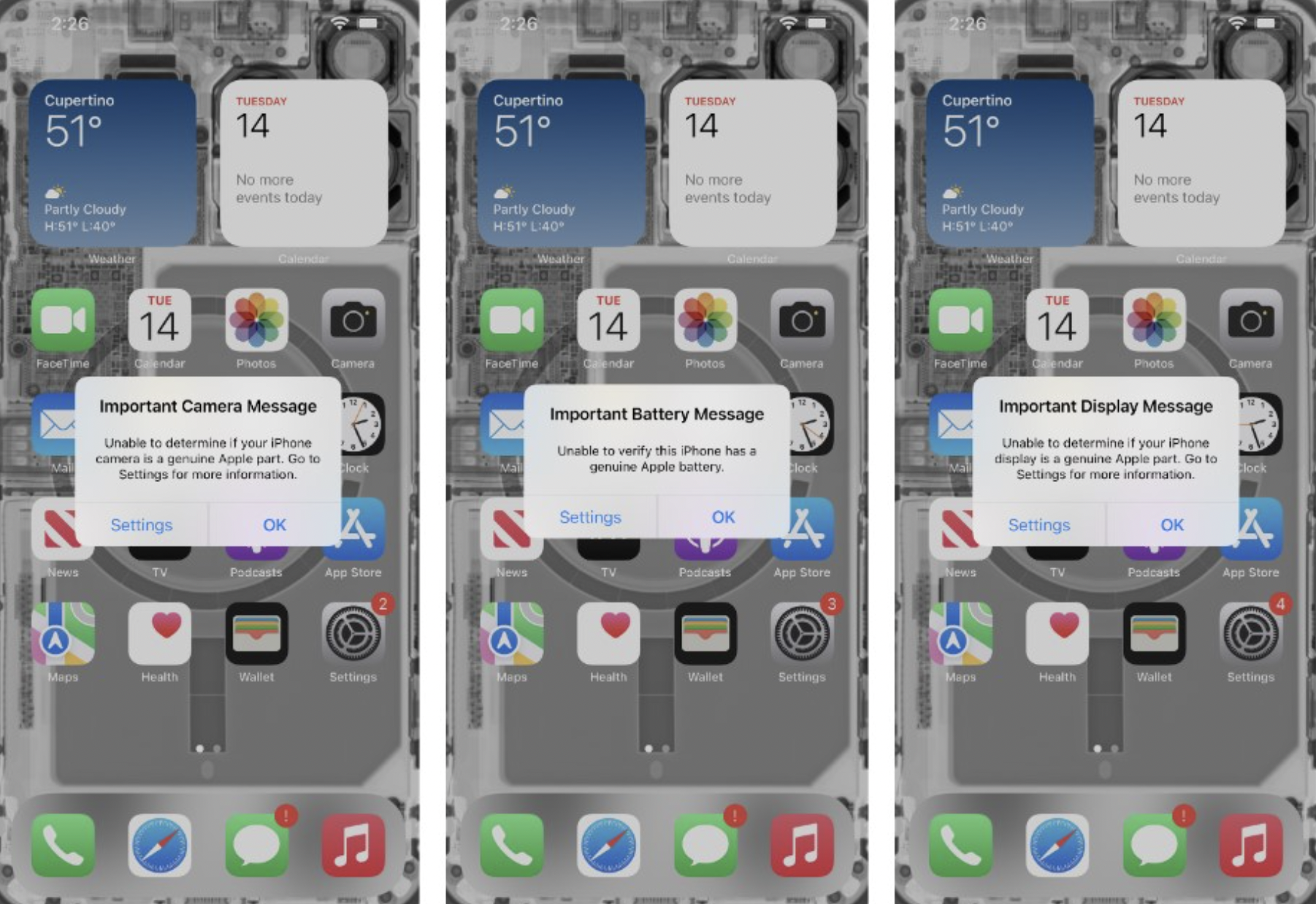Days before the iPhone 15’s upcoming release on Friday, iFixit has severely downgraded its repairability score for the iPhone 14 from a 7 to a 4 because of Apple’s insistence on “parts pairing,” a practice in which parts are largely not swappable from phone to phone because they have been “paired” to a specific phone. Many independent repair professionals believe that parts pairing is the next big right to repair battle, and something that may ultimately need to be addressed with legislation.
This is the first time iFixit has ever reduced a device's score after release.
“Although we enthusiastically awarded it a solid score at launch last year, thanks to its innovative repair-friendly architecture—of which we remain big fans—the reality for folks trying to fix these things has been very different,” iFixit CEO Kyle Wiens wrote in an announcement published on the organization’s website on Tuesday. “Most major repairs on modern iPhones require Apple approval. You have to buy parts through their system, then have the repair validated via a chat system. Otherwise, you’ll run into limited or missing functionality, with a side of annoying warnings.”
“Software now limits many basic iPhone repairs,” he added. “That’s why we’ve revised the repairability score for the iPhone 14 from a recommend 7 out of 10 to a do-not-recommend 4.”
It works like this: various important iPhone components have serial numbers that are paired to the specific phone that they’re in. If one of those components, for example, the screen, is put into another phone, that phone will display a message to users that says “Unable to determine if your iPhone display is a genuine Apple part. Go to Settings for more information.”
I’m currently at the Electronics Reuse Conference in New Orleans, which hundreds of repair professionals, electronics recyclers, and refurbishers attend. Parts pairing is one of the biggest topics of discussion and points of frustration at the conference.
“A phone with a message is just worth so much less,” one repair shop owner who spoke on the condition of anonymity because his store is an authorized Apple service provider, told me.
Subscribe
“I think parts pairing will become a more significant issue, especially with the new USB-C ports, if you can’t replace those,” Nathan Proctor, director of consumer rights group US PIRG’s right to repair project, said at the conference. “Those are going to break like crazy in the iPhone 15. If that’s a big hassle and Apple runs out of parts and you can’t get an aftermarket part, people are going to be upset. Crisis tends to make big changes in customer expectations.”
This is a major problem for a few reasons. It effectively means that broken phones cannot be easily harvested for their genuine parts, a practice that is common in refurbishing and repair and is good for the environment. It also means that specific aftermarket parts, even if they are very high quality, cannot be readily used in new iPhones. This is, of course, by design, and Apple tells customers on its website that “nongenuine parts might affect the safety and functionality of the device.”
In practice, aftermarket parts have been regularly used in every iPhone model since it was released, and there is a long history of the use of aftermarket parts in both electronics and car repair. The Magnuson-Moss Warranty Act, a federal law about device warranties, forbids companies from “tying” the conditions of their warranty to the use of any specific brand of internal parts, including parts made by the manufacturer itself.
iFixit’s repairability scores have become a pretty important indicator of, well, a device’s repairability. They are widely used by consumers, and manufacturers often advertise the score if they release a device with a good score. The French government recently created a similar “repair index” that is modeled on iFixit’s system.
For what it’s worth, executives from Samsung, Google, and Motorola have all spoken at the repair conference, and all of them have highlighted the importance of independent repair. Paul Walker, the Samsung executive, said manufacturers have to “accept” that aftermarket parts are a part of the repair ecosystem.
“The subject of aftermarket parts has always been a controversial area for OEMs [original equipment manufacturers],” he said to the audience. “In a perfect world, we would want the repairer, or the customer to use a genuine part from a genuine source. We don’t live in a perfect world. We have to accept that. There will be times when we can’t supply it, when it’s a supply chain issue or a longevity issue. We have to accept that aftermarket parts are going to be used, and that’s fair. The only thing I’d say is we owe it to the customer that when an aftermarket part is used, it’s transparent, so the consumer gets that knowledge up front.”
Apple sent representatives to the conference, but only for closed door, private meetings.


